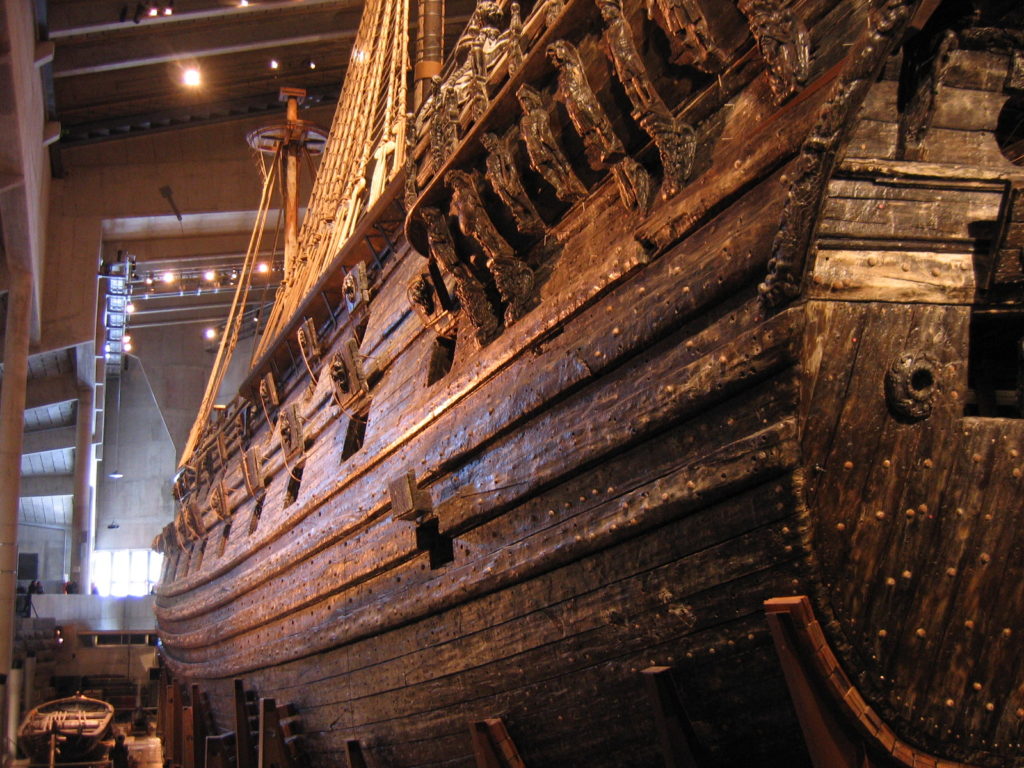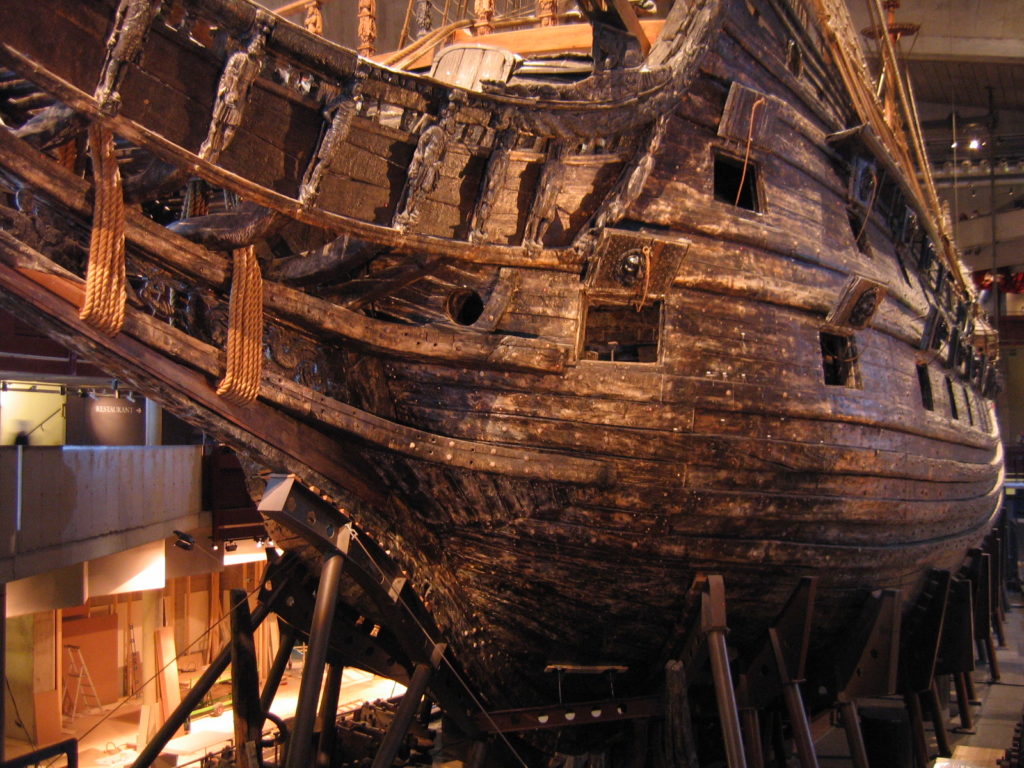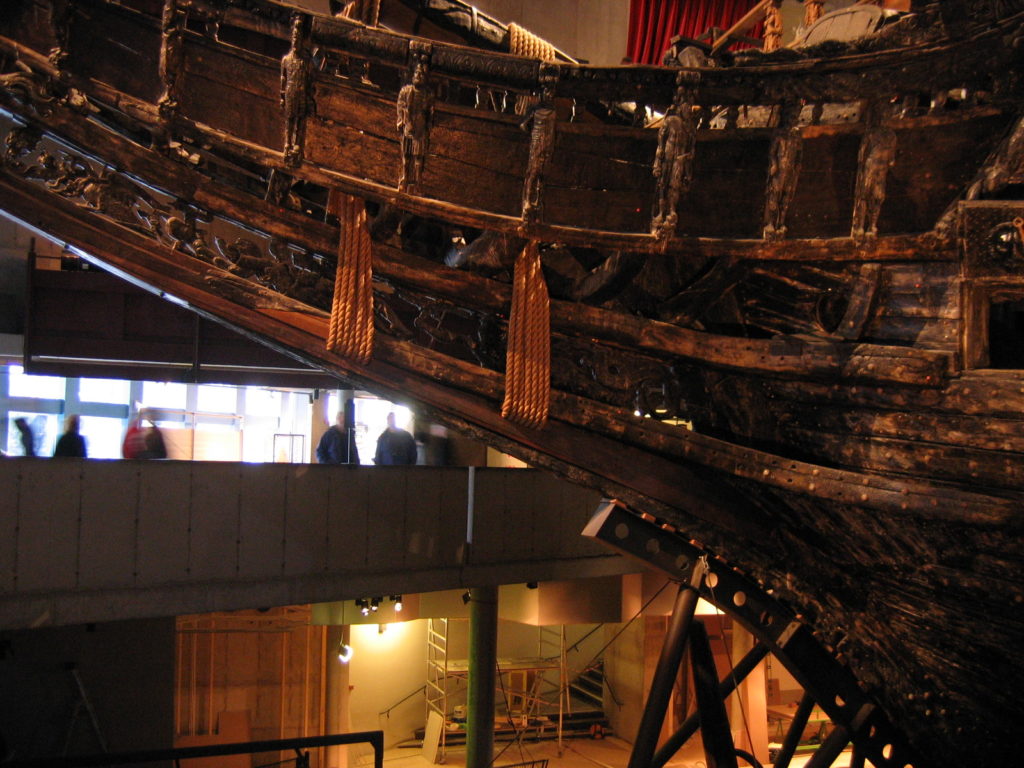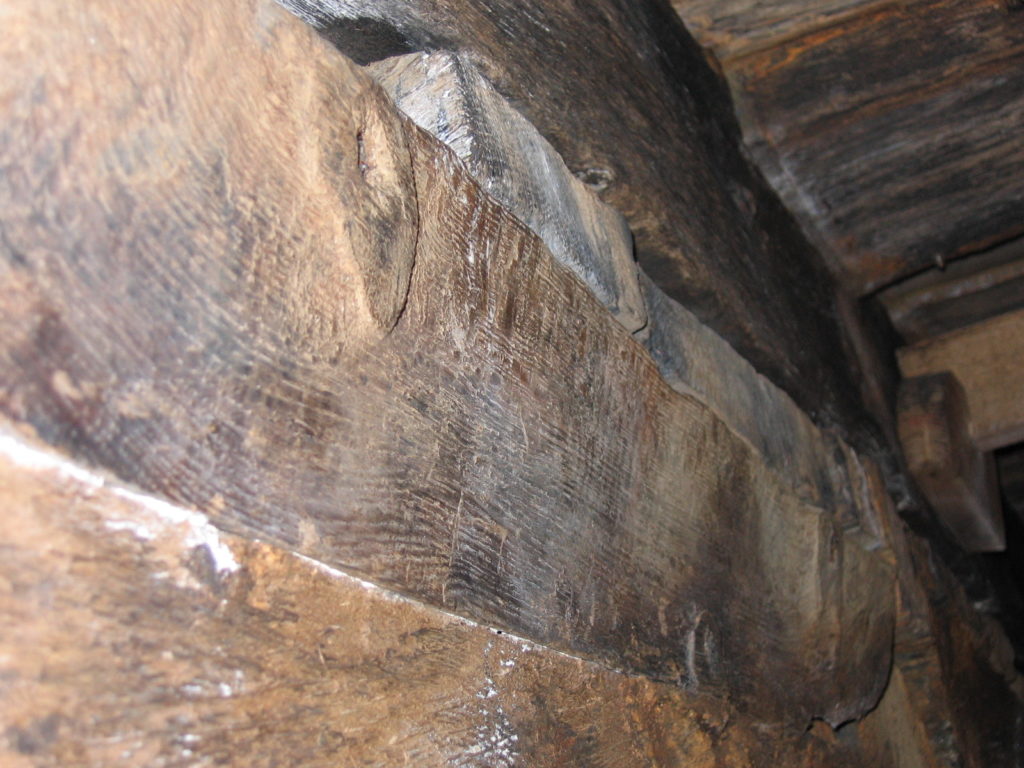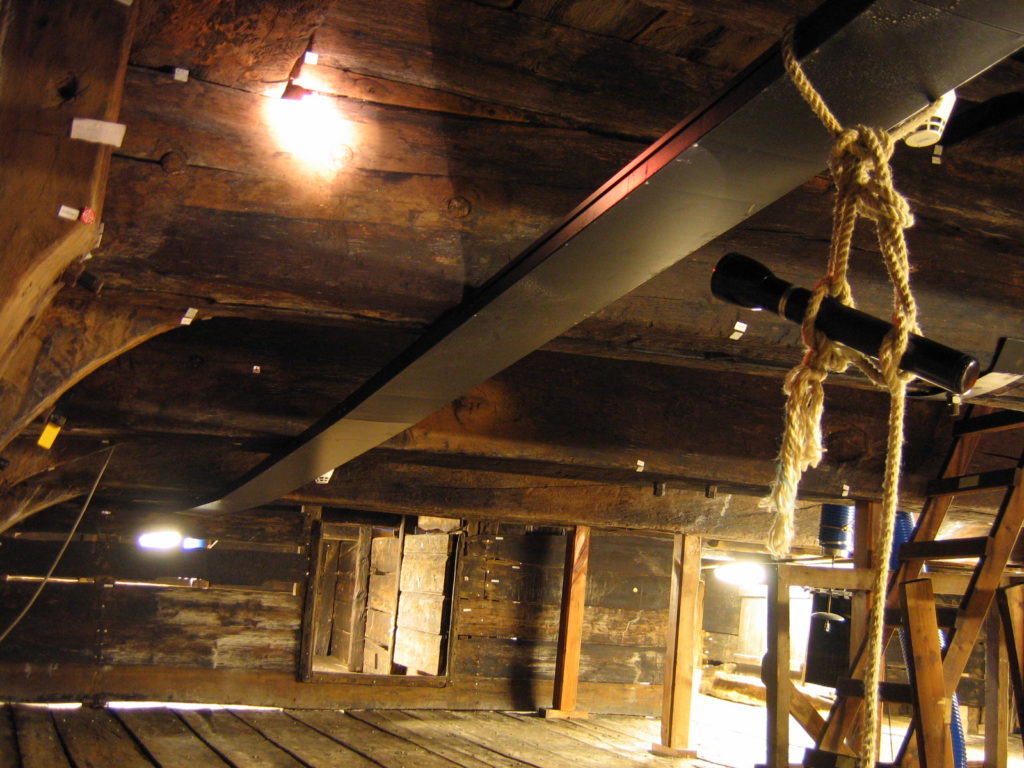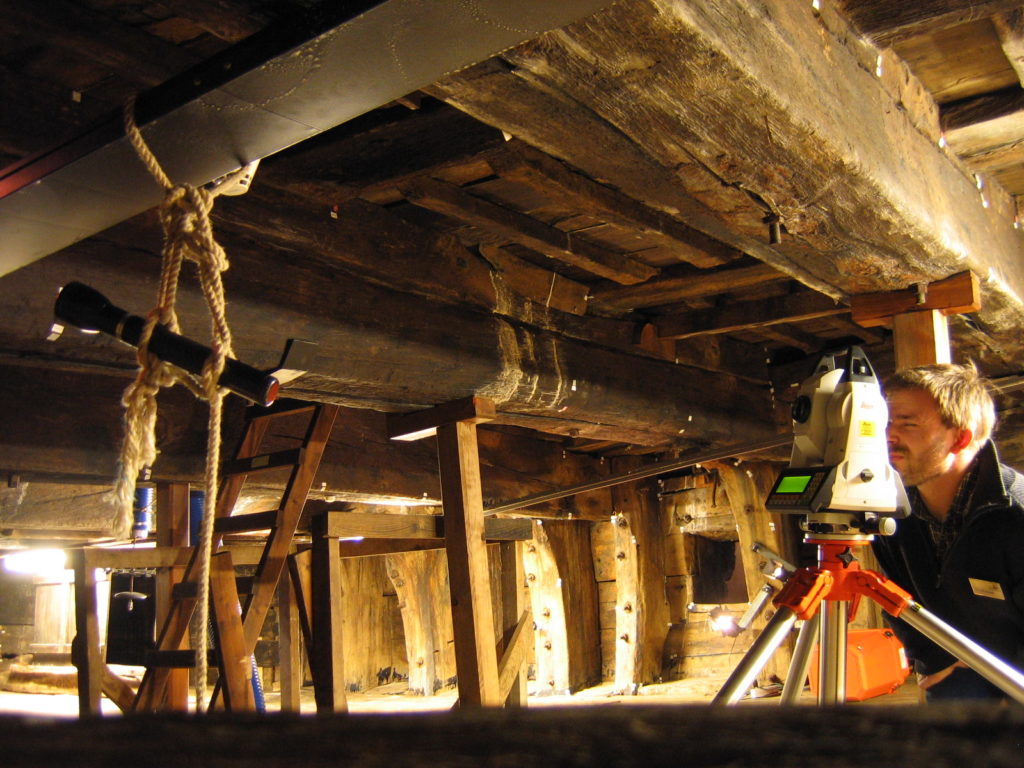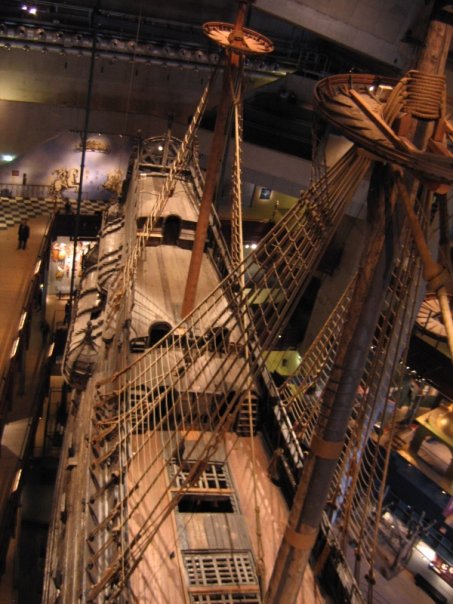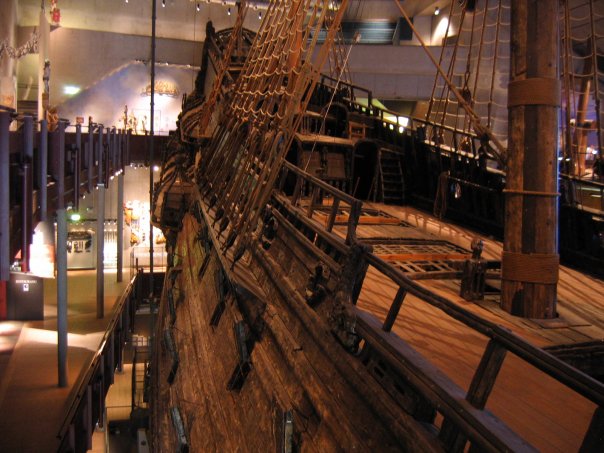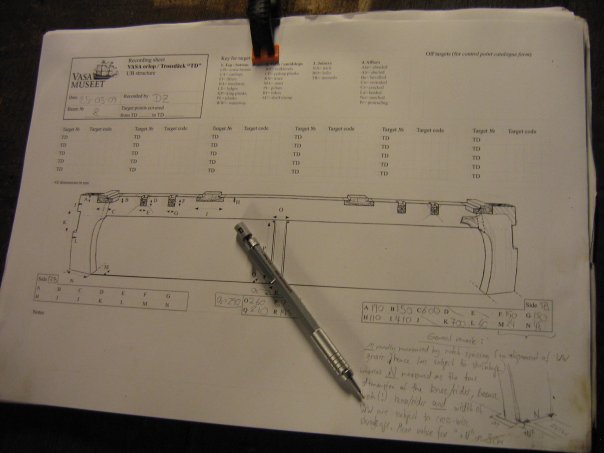Surveying VASA’s orlop-deck
In March and April 2009 I grasped the opportunity to conduct a survey on VASA’s orlop-deck on invitation of Dr. Fred Hocker. It presented a prime opportunity to hone skills in documentation methodology and to refine the understanding of such a complex structure of a ship. Thence two months I was to be the permanent resident on VASA’s trossdäck.
From the start I was very much involved in the planning of the survey, starting with drafting and testing adequate context sheets, which needed to be designed to suit the recording of such a complex structure as a wholly preserved deck of a 17th century warship. Through this task I gained an impression of the importance of having a fairly exact concept of the structure from the start, as random measuring would lead astray.
The structure was recorded by means of a tape-measure as well as a total station survey. Only with time I gained an intrinsic understanding of the construction and how the timbers were fitted and joined together. The use of crooked and of surprisingly rough worked timber rendered a make-shift impression of the way of assembly, which was a stark reminder of the distinctiveness of a shipbuilder’s mind in the early 17th century: Our present day eyes are more accustomed to conformity due to the manufacture of constructional elements in production lines, whereas the shipbuilder of the past sought to employ constructional elements “extracted” from the natural environment with – seemingly – as little effort as possible for its conversion.
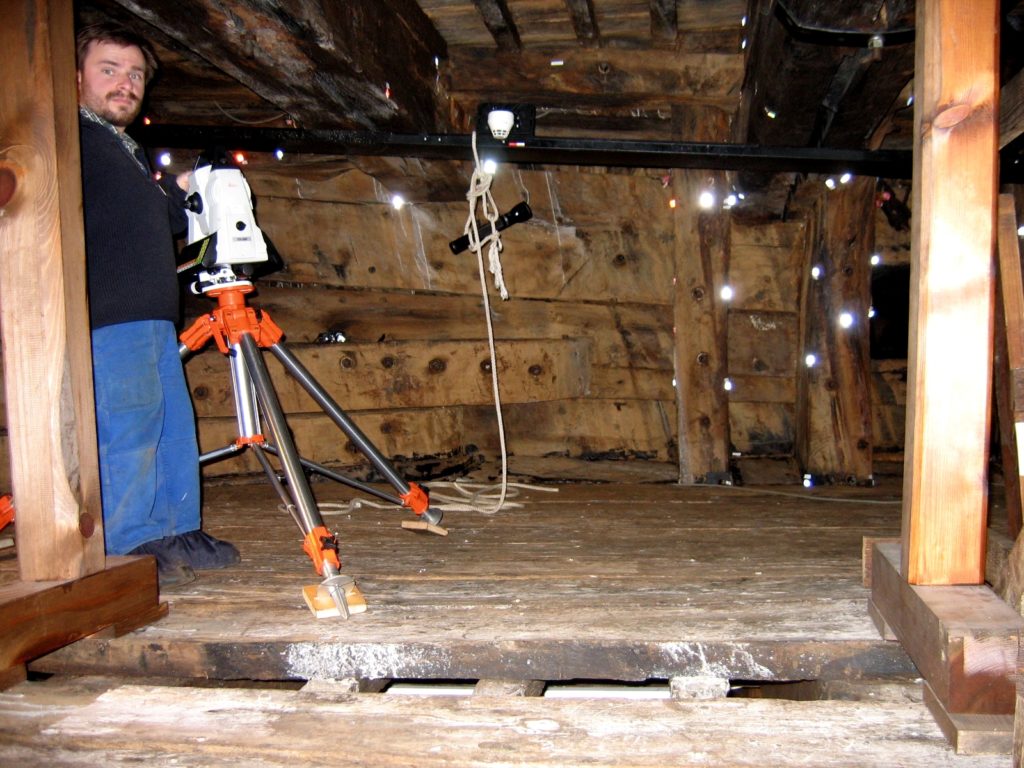
Despite the shipwreck was conserved in PEG, most timbers have suffered shrinkage and joins have come apart. With the ambition to record the ship as closest to the original condition as possible, it was expedient to search for strategical datums which are likely to reflect more than less the original dimensions of the timbers. The finding of these datums became almost a real art, when several factors were accumulating. Whilst the survey naturally incorporated for the most part a tedious routine, i.e. the recording of repetitive constructional features, I was confronted with the question how deviations from the rule – as small and insignificant as they might appear – ought to be treated and recorded and was induced to think about their possible significance. Fred provided some very insightful comments on diverse aspects of the construction, which helped me to develop an appreciation for details, which I would have not perceived otherwise.
During my time at the Vasa Museum I accomplished the manual recording of the entire orlop-deck, the total station survey of the stern section (to be completed by SDU students the following year) and the writing of a manual, in which the problems encountered during the survey were articulated and recording strategies devised. These strategies were implemented also in July, where I helped Fred Hocker to teach students from the Maritime Studies Programme of the East Carolina University to implement the lower gun-deck survey.
Apart from the survey I also had the opportunity to test a Faro-arm, which has become a professional standard in Maritime Archaeology in the early 2000’s to record complex 3-dimensional objects digitally, thus enhancing efficiency, accuracy, accessibility and exchangeability of data. This way of recording as well as the post-processing with Rhino software is especially advantageous for complicated objects with many details. With the swift development of new digital technologies and their application in archaeology, some recording techniques used decades or even only few years ago are often deemed obsolete by now. Yet all methodologies have their advantages and drawbacks alike. While Structure-from-Motion photomosaics and 3D-scanning are time-efficient, not all occularly visible details are picked up. Important features can be highlighted in manual recordings or a faro-arm, whereas more autonomous digital recording techniques might not be able to distinguish the signal from the noise.
This is what my boss has to say:
(…) Dan was tireless as a worker, focused on the task, and used his time effectively. Although working on his own, he accomplished more than a team of four had been able to do the previous year. He paid close attention to the details without losing sight of the overall goals of the project. He was effective in communicating his methodology to the students. Most significantly for us, his creative thinking about the process of documentation solved one of the most significant bottlenecks we had found in tackling such a large project (…)
Dr. Frederick Hocker (Head of Research, Vasa Museum)
Some visual impressions:




